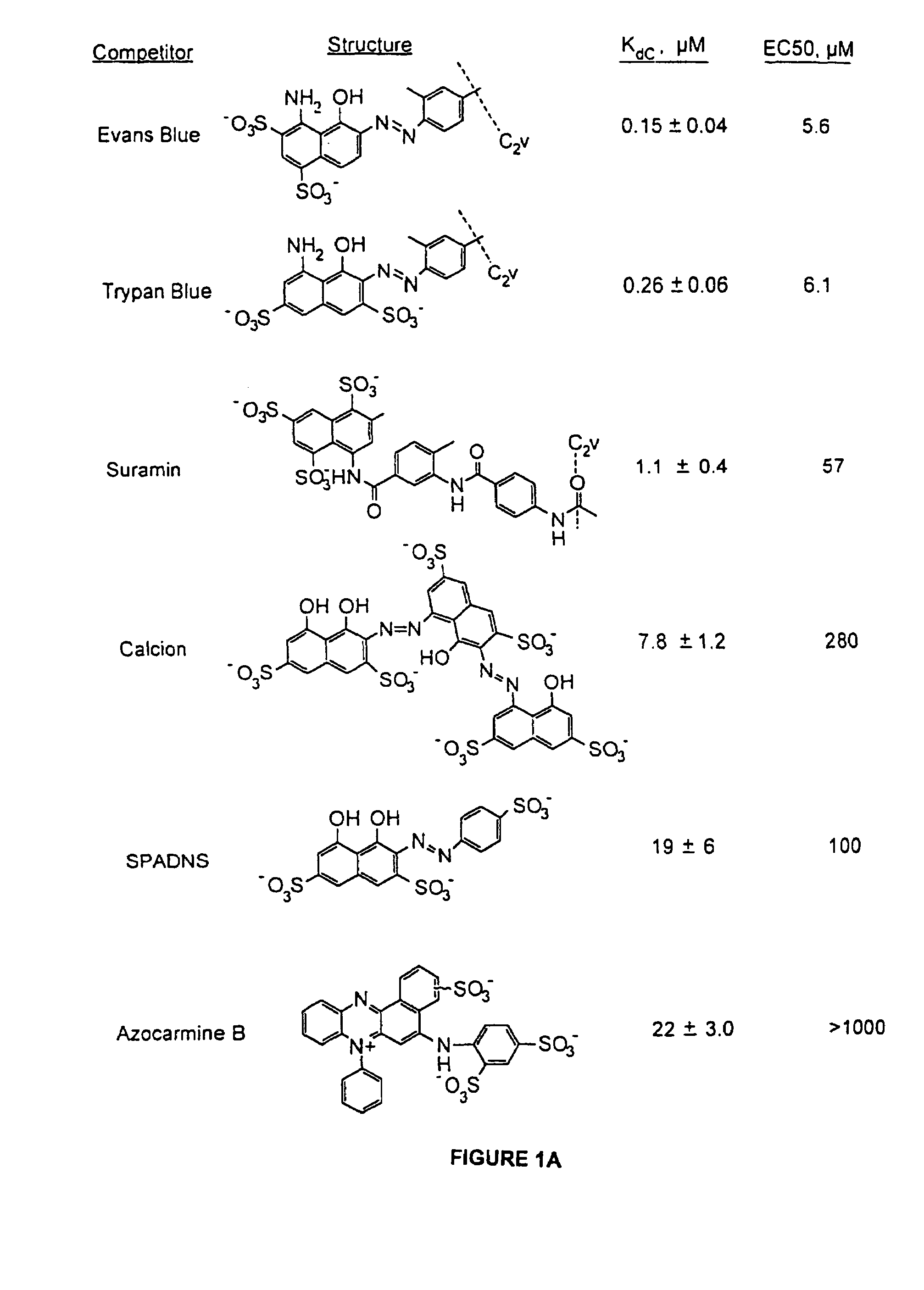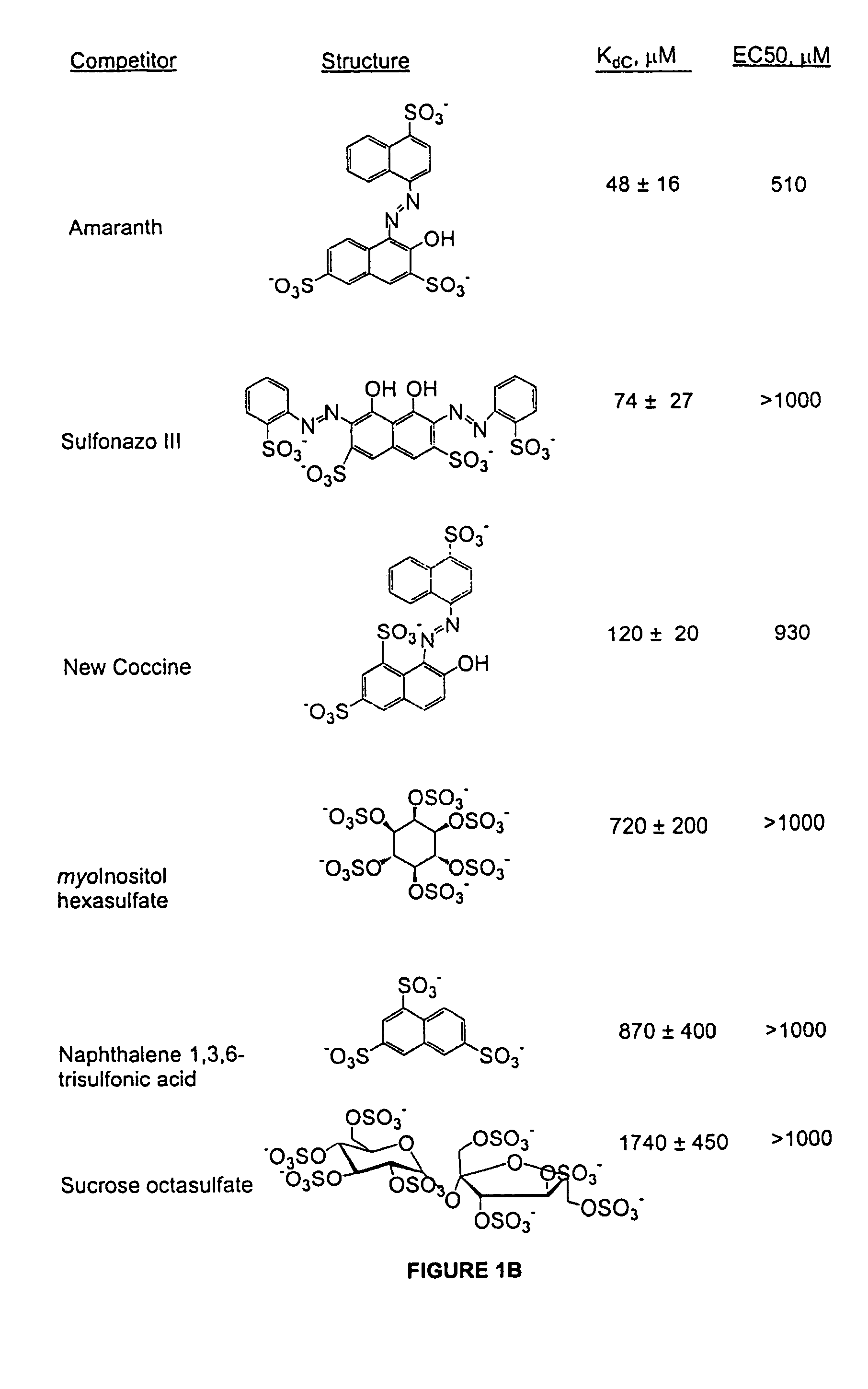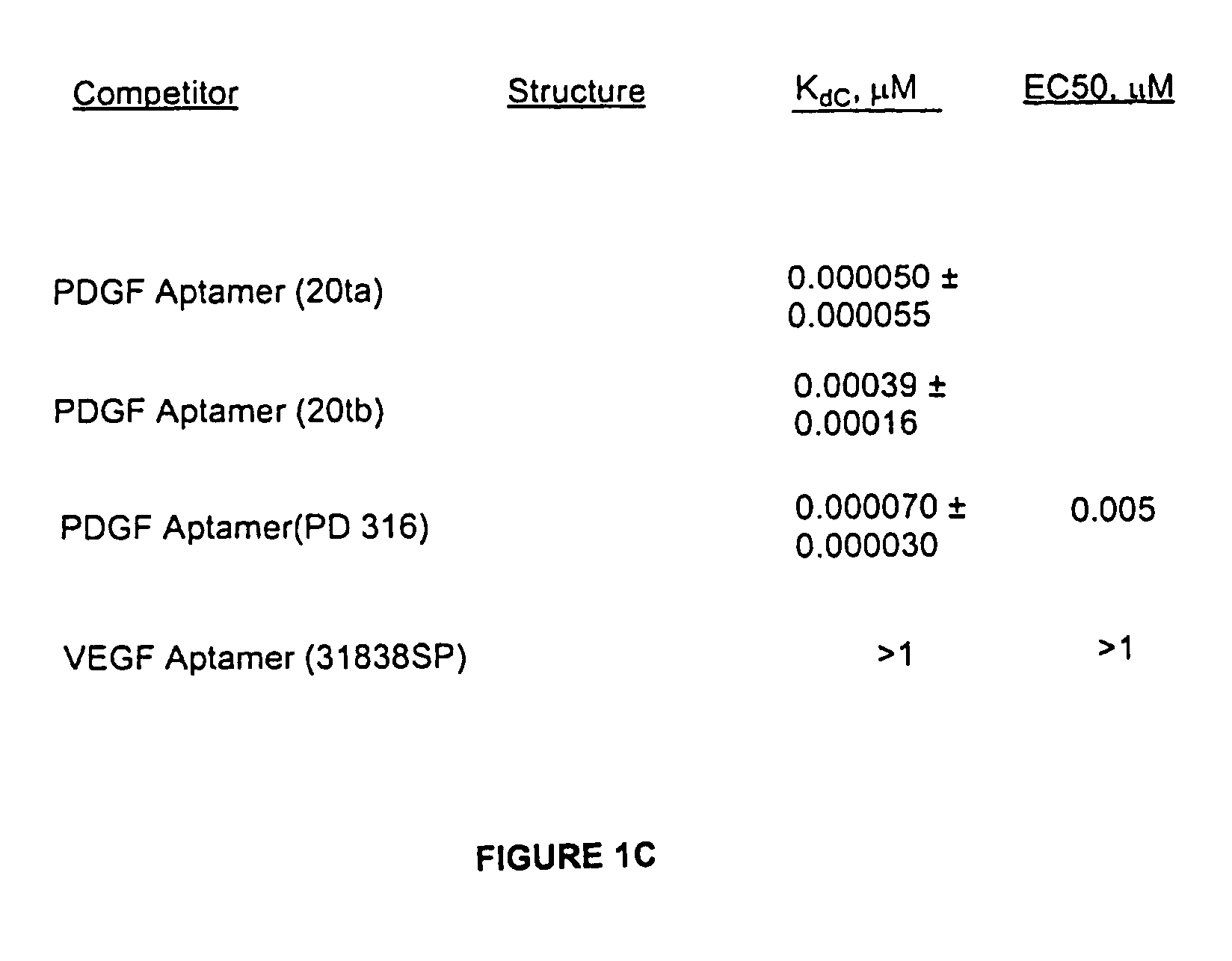Determining non-nucleic acid molecule binding to target by competition with nucleic acid ligands
a technology of nucleic acid ligand and molecule, applied in the field of high throughput screening, to achieve the effect of rapid identification of compounds, high versatility and compatibility, and convenient identification of non-aptamer ligands
- Summary
- Abstract
- Description
- Claims
- Application Information
AI Technical Summary
Benefits of technology
Problems solved by technology
Method used
Image
Examples
examples
[0039]The Examples provided below are illustrative embodiments of the invention. They are not to be taken as limiting the scope of the invention.
example one
Materials
[0040]Human recombinant platelet derived growth factor, BB isoform (PDGF BB) was purchased from R&D Systems (Minneapolis, Minn.) as a carrier free lyophilized powder. Wheat Germ (Triticum vulgare) Agglutinin (WGA) was from EY laboratories (San Mateo, Calif.).
[0041]Oligonucleotides were synthesized using an Applied Biosystems Model 394 oligonucleotide synthesizer according to optimized protocols. PDGF aptamer 20ta is a synthetic 33-mer DNA oligo of sequence:
[0042]
(SEQ ID NO: 1)5′CGGGCGCGTTCTTCGTGGTTACTTTTAGTCCCG,
aptamer 20tb is a synthetic 27-mer DNA oligo of sequence:
[0043]
5′GGGCCGTTTCGGGTTACTTTTAGTCCC,(SEQ ID NO: 2)
and aptamer PD316 is a synthetic oligo containing some modified (2′F and 2′O-methyl, italic and bold letters, respectively) bases, and an 18-atom PEG spacer replacing some bases, to increase serum stability, of sequence:
[0044]
5′TNH2CAGGCUACG[PEG18]CGTAGAGCAUCA[PEG18]TGATCCUG-3′3′T.(SEQ ID NO: 3)
[0045]WGA aptamer 11.20 is a 98-mer RNA transcript with 2′aminopyrim...
example two
PDGF Aptamer Competition Assay
[0057]For the PDGF competition assay, a DNA PDGF aptamer sequence identified previously was used. The aptamer and methods used herein are described in detail in Example One. Aptamers obtained in this experiment bind preferentially to the B-chain of PDGF in a manner that inhibits receptor binding and PDGF-BB-induced DNA synthesis in vitro. Using photo-crosslinking experiments, it has been shown that a specific nucleotide in the aptamer interacts with phenylalanine-84 of the PDGF B-chain which is located near the region of PDGF know to be involved in receptor binding (Green, L. S. et al. (1996) Biochemistry 35, 14413-24). To facilitate detection of competitors in the micromolar range, the affinity of the PDGF aptamer 20ta (Kd=50 pM), a 33-mer, was deliberately reduced about 10-fold by additional truncations. Thus, the aptamer used for competition binding experiments, 20tb, is a 27-mer that binds to PDGF-BB with a Kd of 0.5 nM.
[0058]A panel of oligoanions,...
PUM
| Property | Measurement | Unit |
|---|---|---|
| temperature | aaaaa | aaaaa |
| volume | aaaaa | aaaaa |
| time | aaaaa | aaaaa |
Abstract
Description
Claims
Application Information
 Login to View More
Login to View More - R&D
- Intellectual Property
- Life Sciences
- Materials
- Tech Scout
- Unparalleled Data Quality
- Higher Quality Content
- 60% Fewer Hallucinations
Browse by: Latest US Patents, China's latest patents, Technical Efficacy Thesaurus, Application Domain, Technology Topic, Popular Technical Reports.
© 2025 PatSnap. All rights reserved.Legal|Privacy policy|Modern Slavery Act Transparency Statement|Sitemap|About US| Contact US: help@patsnap.com



